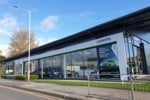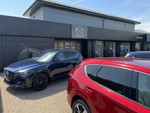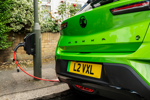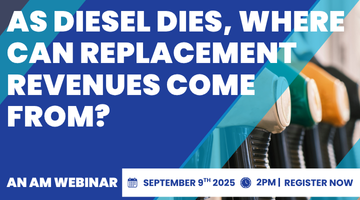Older used cars are the Cinderella stock of the dealer’s forecourt.
They go unloved, unnoticed and often unsold, destined for a life being traded in the independent sector.
But are franchised dealers missing a major profit opportunity?
Pendragon chief executive Trevor Finn thinks so.
He recently announced that his group would be looking to older used cars as a steady source of income that offered a safer bet for profits compared to the price fluctuations currently hitting the nearly new market.
He said: “We will be recycling more of our own second-hand cars. The bulk of them will now get retailed.”
Finn is determined that better income will be earned from the used cars available and has estimated that an average of only £35 a car is necessary to lift group earnings by £10 million.
New car registrations in January dropped at their fastest rate for 10 months.
Pendragon, which trades as Evans Halshaw and Stratstone, revealed last month that this hurt margins on new vehicles, which account for 54% of group revenue, so it makes sense that older used cars should come to the rescue.
Finn added: “We said in last year’s AGM statement that we saw the used car market as a major growth area for us.
“The used car market in the UK is roughly three times the size of the new car market. In the second half of the year we started to roll out changes to our used car offer across the group.
“Broadly speaking the main changes relate to moving our price banding to encompass older, lower value cars.”
According to the Used Car Market Report from remarketing giant BCA, older cars can and do provide an important revenue source for many dealers.
The report shows that dealers, both independent and franchised, sold 4.08 million cars in 2006, a rise of 209,000 units.
Unsurprisingly, dealers dominate sales of younger cars, with sales of up to two year-old cars rising by 6.2% (55,000 units) year on year to a record high of 945,000, representing 89.9% of this market segment.
Dealers also maintained their dominance of sales in the high-volume three to five year-old sector. Volumes rose by 9% (144,000) to 1.74 million, as dealers’ share of this sector rose 1.5 points to 77.3%.
But perhaps more surprising is the motor retail sector’s penetration of sales of six to eight year-old cars.
Volumes rose by 9.1 % (66,000) to 781,000 units – to represent a market share that rose by 3.1 points to 50.7%.
In all, dealers’ volumes in the three to eight year age group were up by 9.1% (210,000) year on year to 2.53 million, accounting for two-thirds of cars sold in this key market sector.
Dealers even retain nearly a quarter of all sales of cars aged nine years and over, selling over 600,000 units in a sector that has typically been the province of private sellers.
However, this growth is generally being taken up by the independent sector, while franchised dealers seem reluctant to be exposed to this budget end of the market.
But the financial analysis from BCA’s report shows that pays to investigate older cars.
While the average selling price of used cars by franchised and non-franchised dealers remained virtually static at £6,266 in 2006, (compared with £6,278 a year earlier) this was despite a substantial drop in selling prices for up to two year-old cars and a notable fall in the value of cars aged three to five years.
The average dealers’ sales price of cars in the up to two year age band was £629 lower year on year at £9,638, while the average price of three to five year cars fell by £80 to £6,666.
This means much of the growth in the overall record-breaking £25.6 billion spent at dealers in 2006 was due to rising values for older cars.
The average dealers’ selling price for a six to eight year-old car rose by £64 to £4,207.
The average price of a nine years-plus car from a dealer increased by a substantial £436 to £2,542.
So why should dealers be so wary about getting involved in the older used car market?
According to one leading industry consultant, who asked not to be named, it is a complete failure to understand the potential of the market and profit from it.
He blamed bad management, boardroom politics, infighting and badly trained salespeople as the root cause of a problem that could be costing dealers millions of pounds a year in lost profits.
“Car dealers are useless at used car sales,” he said, “They can’t figure out the cultural differences between the new and used market.
“Salespeople see used cars as a burden with lots of preparation work and hassle, while in larger dealer-ships the potential profit is lost in disputes between sales and the bodyshop.
"Some bodyshops charge retail prices for preparing their own cars. It is just ludicrous because no-one is looking at the bigger picture.”
#AM_ART_SPLIT# The bigger picture covers much more than just an improved profit opportunity. Older used cars attract an entirely new customer base, often including younger drivers who could become lifelong customers.
The consultant said: “No-one thinks about the increase in the customer base or the type of people that you are selling to. It could be a second car for a first-time driver who might be coming back in the future.”
He agrees with Pendragon’s Finn that there are good profits to be had at this end of the market and there is a higher yield per unit, even if there is more preparation work to be carried out.
But the level of preparation work also highlights a fundamental misunderstanding about the market, he claimed.
Dealers throw money at making the car look like new, raising expectations that it will perform as a new car and leading to increased demand for warranty repairs and higher costs.
In larger dealership groups, it can help to have a separate brand both for marketing purposes and to help management of the business look differently at it.
The potential profits from turning to this Cinderella stock is £1,000 per car, although this might fall to £800 for vehicles valued below £4,000.
Get it right and pick the right cars and you can achieve fast stock turnaround.
And that means better profits with little additional effort.
It seems like a fairytale ending, but whether the rest of the franchised dealer industry follows Finn’s lead remains to be seen.
Tips for selling older vehicles
People
Make sure all your staff understand that older used cars offer just as good a profit opportunity as a new car. Ensure they know how to correctly appraise older part exchanges and price them for profitable resale.
Politics
Avoid internal battles between different profit centres. What matters is the overall profit opportunity, so if you have an internal recharge for bodyshop work, consider a no-profit arrangement for older cars.
Price
Recognise the profit opportunity in older used cars, but remember to factor in the potential risk of returns and repairs.
Stock
Ensure you have a reliable source of good older stock in addition to part exchanges, which may not be suitable for resale through the forecourt. Auctions may be the best starting point.
Brand
Consider whether to market older cars through a new brand that allows a separate management focus and allows for separate marketing messages to be delivered to the relevant audience.
Dealer case study
The older used car market can be a steady source of profitable income, according to Ford dealership Pick Arthey.
It sells a range of new and used cars from its forecourt operation in the Northamptonshire town of Oundle, where it has been trading for 22 years.
While the new and nearly-new car markets suffer from occasionally precipitous downturns and the price-focused attentions of car supermarkets, cars over four years old can be a steadier source of income.
Eddie Arthey, one of owners, said: “With the advent of car supermarkets, nearly new is being dominated by them, but the 4-7 year old market is nearly as profitable.”
Pick Arthey’s in-house garage ensures profit is retained in the business and is clearly attributable to the whole dealership.
There are challenges, as the used car business operates under the same brand just yards away from the new car showroom.
He said: “The perception is that if you come to a Ford dealer you will get a better standard of car.
"There is work to do on these cars and people’s expectations are that a car will be like new, even if it is seven years old.”
Even so, it offers returns that are similar to an average vehicle sold off its new vehicle forecourt. A margin of about £1,000 can fall to £500 retained profit after all costs are taken out, but it still represents a significant yield uplift.
Arthey said: “Compared to a smaller new car, the income is about the same, but if you are talking about a much larger new vehicle, then obviously we might get more.”
The result is that the business enjoys substantial turnover from its used vehicle forecourt, selling about 300 used cars compared to 80 new cars a year.
Checking for problems
Stock can come from anywhere, such as part-exchanges, defleets and auctions, but it is vital that these low-value vehicles are treated with the same care and attention a new car would receive in checking for problems.
Some cars, depending on their age, require a full driving appraisal. Older cars may need a more experienced technician to get the most out of a test drive.
This is especially true with 4x4s, as someone needs to look under it. A salesman having a quick look around it won’t work in this case.
An experienced engineer needs to give the car a thorough going over.













Login to comment
Comments
No comments have been made yet.